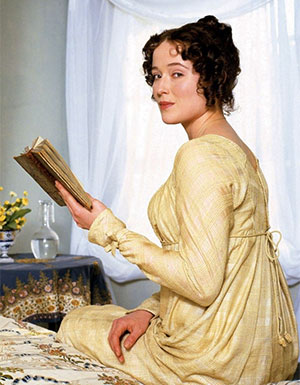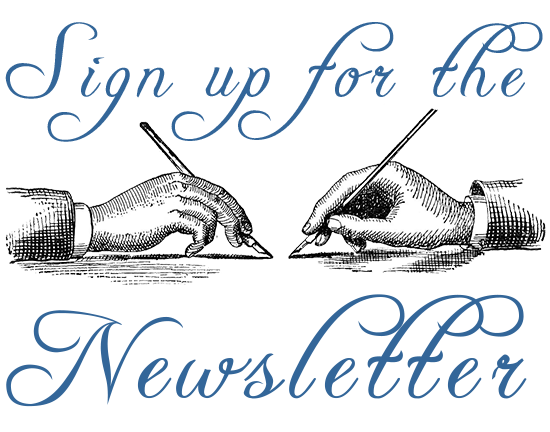No matter the adaptation, one of my favorite scenes in “Pride and Prejudice” begins when Caroline Bingley presses Elizabeth Bennet to follow her example, and “take a turn about the room,” with the assurance that “it is very refreshing after sitting so long in one attitude.”
Of course, the main objective of Miss Bingley’s promenade is to catch Mr. Darcy’s eye, and the culmination is his comment to Elizabeth that “my good opinion once lost is lost forever.”
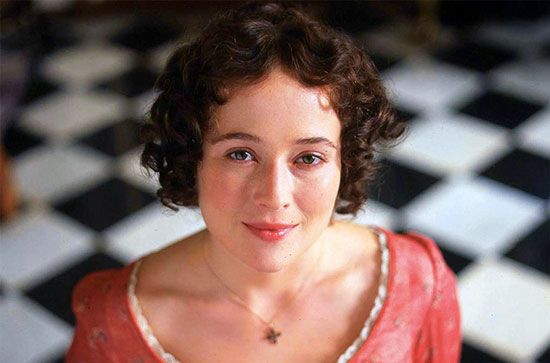
To help keep this site running: Willow and Thatch may receive a commission when you click on any of the links on our site and make a purchase after doing so.
In these few moments, there’s so much dramatic set-up for the rest of the story that it would be difficult to not love this scene, but the language – and idea – of taking a turn is pleasing in and of itself. I may be mixing period drama references here, but I am endlessly longing to take a bosom friend by the arm (not a Caroline Bingley) and take a turn with her around a walled garden. This is my kind of exercise.
It seems this is just as Jane Austen would want it: enter Bryan Kozlowski, author of The Jane Austen Diet: Austen’s Secrets to Food, Health, and Incandescent Happiness. His book unlocks a “health and happiness” manifesto straight from Austen’s pen, revealing why her prescriptions for achieving total body “bloom” still matter in the 21st century.
Below, Kozlowski spotlights a handful of Austen’s historic wellness strategies that have made their way into our beloved Jane Austen period dramas. – Willow and Thatch

Days of reckoning come to all fans of Jane Austen, a time for honestly deciding if our fanaticism has gone a wee bit too far. Personally, after spending two years researching the holistic health strategies in Austen’s novels, tailoring my food and exercise intake to Regency-appropriate levels, essentially going on the Jane Austen diet (pray, don’t laugh), I do believe I’ve officially reached mine. Heck, perhaps I’ve even done a full-on Louisa Musgrove – willingly flying off the Cobb at Lyme and concussing my head on the cobbles. But frankly, “my dear,” to quote Jane, “I do not care sixpence,” because dieting like its 1800 has truly turned out to be one of the best experiences of my life.
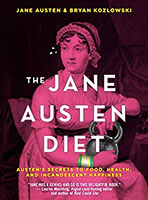 My leap of faith started in 2016, the year I stumbled upon a side of Austen’s wisdom I never knew existed: she could she spin a good romance yarn, but Jane was equally and enthusiastically interested in health. Indeed, alongside Austenworld’s rich gents and swoony marriage proposals is a serious preoccupation with wellness hard to ignore. Not only does the word “health” pop up more than a hundred times in her classic novels, its themes are woven into practically everything Austen wrote – from the food philosophies of “Emma” to the fitness theories of “Mansfield Park” to her last, unfinished novel, “Sanditon” (set, go figure, in a seaside health resort).
My leap of faith started in 2016, the year I stumbled upon a side of Austen’s wisdom I never knew existed: she could she spin a good romance yarn, but Jane was equally and enthusiastically interested in health. Indeed, alongside Austenworld’s rich gents and swoony marriage proposals is a serious preoccupation with wellness hard to ignore. Not only does the word “health” pop up more than a hundred times in her classic novels, its themes are woven into practically everything Austen wrote – from the food philosophies of “Emma” to the fitness theories of “Mansfield Park” to her last, unfinished novel, “Sanditon” (set, go figure, in a seaside health resort).
Moreover, what Austen observed about health is so brilliantly intuitive, most of her insights are still remarkably relevant today. Living in an age of excess that faced some of the same body challenges we grapple with in the 21st century, Austen’s prescriptions to better living (whether through food, exercise, or mental management) now find fresh support from the latest scientific research.
This hidden health code is so uniquely Janeish, it usually winds up on the silver screen, with most Austen movies showcasing some of the same wellness hints found in her original novels. In fact, if you ever wondered why sitting on your bum and watching “Pride and Prejudice” (the six-hour version) is such an oddly inspirational experience, making you yearn to leap up with an energetic, “Make haste! We must go on a long walk!” then you’ve already beheld the magic of Austen’s clever health code at work.
And while you’ll certainly find more detailed wellness strategies in her books, I’d like to think that starting with a cozy flick on the telly would incur no look of shame from Jane. After all, going at your own relaxed pace is one of the refreshing hallmarks of Austen’s approach to better health. Or, as she would more wittily put it, “nothing ever fatigues me but doing what I do not like.”
So let’s get comfy, good sirs, and do a vicarious workout through the wellness landscape of Austenworld. Make haste!

“I cannot give up my early walk” – Emma
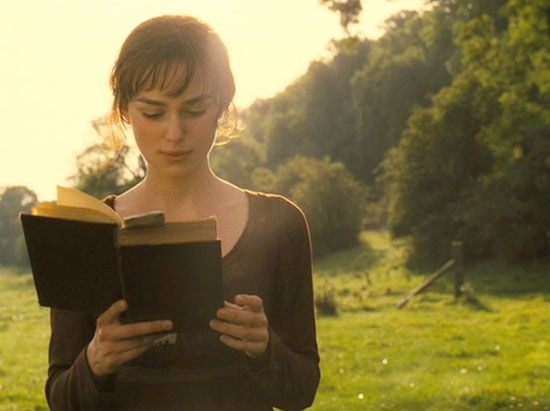
Whichever “Pride and Prejudice” film camp you fall into (Team Firth or Team Macfadyen), I have to award one well-deserved point to the 2005 version. Them’s fighting words, I know, so please bear with. Its memorable opening sequence – the sunrise breaking through the dew, the figure of Lizzie Bennet out walking in its golden light – all captures a hugely important piece of Austen’s health puzzle woefully needed in our modern age.
Popping outside for a walk first thing in the morning is a well-honored habit in Austen’s novels, from Anne’s seaside stroll “before breakfast” in “Persuasion” to Jane Fairfax’s insistence in “Emma” that “a walk before breakfast does me good.” And since these leading ladies are some of the cheeriest morning people in classic literature (they usually get a ridiculous amount accomplished before breakfast even begins), I had to surmise that the secret to their early energy was hidden in those routine morning rambles. It was the first Janism I began testing out in everyday life, and the first I discovered to be amazingly effective. Because whatever Austen understood about biology, she certainly was attuned to the older, more natural rhythms of life.
That is, being diurnal creatures, the optical receptors in our eyes depend on daily exposure to morning light to trigger a whole slew of hormonal secretions, keeping things like our energy, mood, and metabolism in proper balance. The nocturnal hormone melatonin is particularly sensitive to natural light, helpfully switching off and therefore boosting our morning vigor at the merest glint of sunlight (ten times brighter, even on a cloudy day, than artificial indoor lighting). It certainly explains why groggy slumps to the breakfast table are almost entirely absent from Austen’s novels. And when they do chance to occur, when Marianne Dashwood wakes one morning “more in need of repose than when she lay down,” we can confidently blame it, as everything else, on Willoughby.
“The posture is thought good for me” – Austen’s Letters
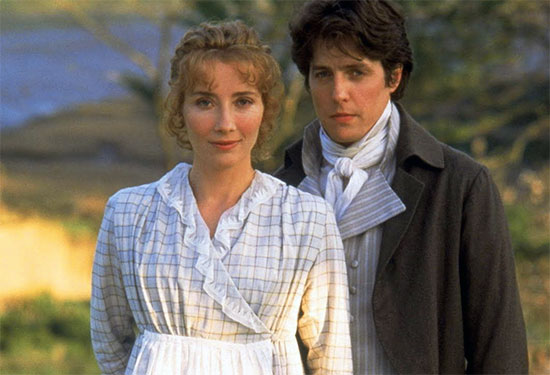
While training for her onscreen role as Elinor in “Sense and Sensibility,” Emma Thompson noticed something surprising about the simple act of standing like an Austen heroine: it’s practically a workout. “We all stand about like par-cooked spaghetti being straightened,” she writes in The Sense and Sensibility Screenplay and Diaries, realizing that keeping constant control of her posture while on set, with “the pelvis firmly beneath the rib cage” took real strength. “Apparently rock and roll liberated the pelvis and it hasn’t been the same since,” Thompson quips. (By the by, if you haven’t read the “Diaries,” give it a go, it’s a cracking good read. And while you’re at it, it wouldn’t hurt doing some Regency posture training yourself. Good posture, after all, was considered a legitimate form of exercise in Austen’s day, an era that admired all that was “tall, straight, and flourishing.” And that applied to standing or sitting.)
Catherine speaks of “exercise of the most invigorating kind” when trying to stay gracefully erect during a bumpy carriage ride in “Northanger Abbey.” Elsewhere, Caroline Bingley in “Pride and Prejudice” insists that merely walking with straightened poise is a veritable “accomplishment” and bragging right. It all seems rather quaint to our modern, sweat-induced idea of exercise, but anyone who has tried to replicate Regency posture rules – even for a few minutes – knows how demanding it can be on your core muscles. Emma Thompson soon came to appreciate the hidden “muscularity of [the Regency] physique, the strength beneath the ease of movement,” which anyone can still gain today, without so much as moving a delicate ankle.
“We will have a snug walk together” – Persuasion
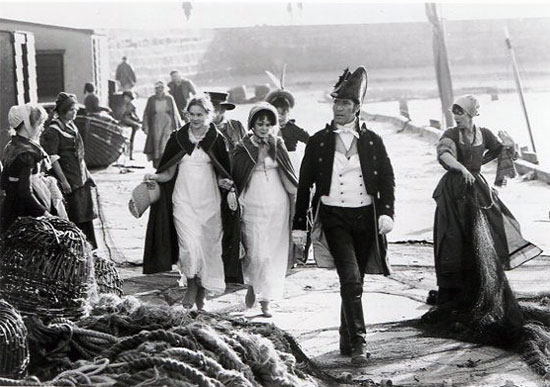
Though when it comes to exercise in Austenworld, nothing quite outshines Austen’s simple support for walking: “I walk: I prefer walking.” I remember watching the 1995 version of “Persuasion” as a teenager and falling in love with the film’s “long walk” scene, capped by a cozy cup of tea and a warm fire at the end. Ahh, if only exercise were that easy-breezy for people like me, ever the congenital coward when it comes to stepping foot in modern gyms. (Top phobias, in case you’re interested: smells, grunts, shared sweat.) Yet inspired by Austen’s insights, I’ve thankfully discovered that keeping fit truly doesn’t have to be any more complicated than “a pleasant walk.” We’re designed for it.
There’s no exercise on earth more natural and least likely to injure than walking. It has the lowest dropout rate of any other physical activity, according to the American Heart Association, with the selfsame heart and body benefits as running, which explains why groups who have stuck closest to Regency walking habits, such as some Amish communities, have far lower obesity rates than the average population. And though I realize that smells, grunts, and sweat might appeal to some individuals on the fringe (bless you), for most of us gentlefolk, walking is far more pleasurable.
Note that Austen only uses positive-reinforcing words to describe exercise in her novels – words like “comfortable,” “delightful,” even “snug” – an important point since research has found that the more physically and mentally enjoyable you keep exercise, the more you’re likely to stick with it. Therefore, far from being weakened by all these easy movements, Austen’s heroines actually stay remarkably fit, seeking pleasurable opportunities for exercise throughout the day, and not just for one hour at a gym. As a result, they’re usually found racking up far higher pedometer readings than the average American.
“They met for the sake of eating, drinking, and laughing together” – Sense and Sensibility
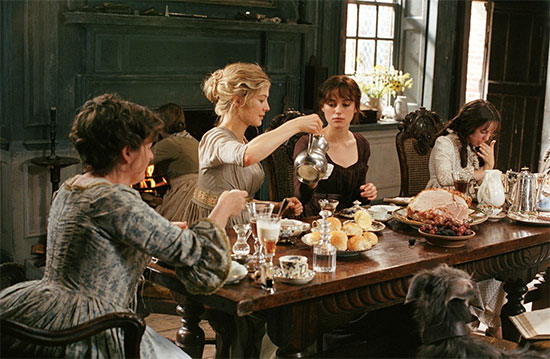
Austen film adaptations don’t allow much room for examining all of Jane’s elegant philosophies about food – too busy with the love story, alas – yet one feature always manages to shine through: the importance of eating communally. Scenes with long tables and gossiping diners, busy reaching for the fresh crumpets the servant just brought in, have always been some of my favorite clips. It all feels so achingly distant from the food world of today, of lunches on laps while driving and solitary dinners in front of the TV. But dining alone is always a sad business in Austenworld (I count only two places in Jane’s entire oeuvre where characters eat alone), because she respected something other traditional cultures around the world still value.
There’s a psychological safety valve when we eat with others, regulating our relationship with food; eating “in company,” as Austen would say, reminds us that food isn’t just caloric fuel for those who eat to live, or decadent fun for those who live to eat, but a positive binder for the human relationships that matter most. Yes, bad food romances are just as common in Austenworld as bad hookups in Brighton, but interestingly, food effortlessly drifts into its healthiest place the more it is communally divided in her novels.
Modern research confirms that families who eat together tend to raise healthier kids with healthier relationships with food for just this reason. “Company, company, where would we be without company!” says Sir John in the 2008 remake of “Sense and Sensibility” – a perfect reminder for putting some real-life people back into your diet (not cannibalistically, just to clarify).
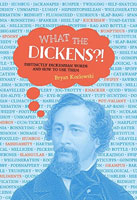 Bryan Kozlowski is the author of The Jane Austen Diet: Austen’s Secrets to Food, Health, and Incandescent Happiness, available March, 2019 by Turner. His works have appeared in Vogue and The New York Times. A graduate of the Culinary Institute of America and a lover of “lit wit” – bringing the wisdom of classic literature into everyday life – he’s authored two children’s cookbooks and a lexicon of Charles Dickens’ vocabulary, culled from his classic works. What the Dickens?!: Distinctly Dickensian Words and How to Use Them is a literary romp through the twisty alleyways of the Victorian vernacular.
Bryan Kozlowski is the author of The Jane Austen Diet: Austen’s Secrets to Food, Health, and Incandescent Happiness, available March, 2019 by Turner. His works have appeared in Vogue and The New York Times. A graduate of the Culinary Institute of America and a lover of “lit wit” – bringing the wisdom of classic literature into everyday life – he’s authored two children’s cookbooks and a lexicon of Charles Dickens’ vocabulary, culled from his classic works. What the Dickens?!: Distinctly Dickensian Words and How to Use Them is a literary romp through the twisty alleyways of the Victorian vernacular.
If you enjoyed this post, be sure to see The Period Films List,with the best historical and costume dramas sorted by era. You’ll especially like the Best Period Dramas: Georgian and Regency Eras List, and want to read about the upcoming adaptation of Pride and Prejudice. Also see Costuming Pride and Prejudice, and the news about Sanditon.

